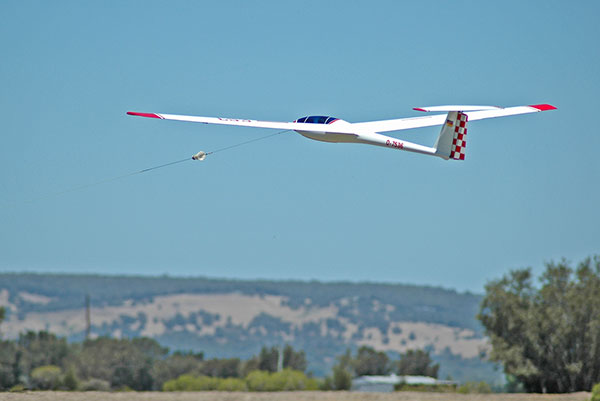Gliders
Click on links below for details
WA State F3F Feb 2011 Distance Results
WA State F3F Feb 2011 Duration Results
WA State F3F Feb 2011 Speed Results
R/C sailplanes provide a good introduction to radio control model flying for the novice as they are quite stable so the pilot can soon gain confidence. It is also an economical way to get into aeromodelling as the initial costs can be fairly moderate.
If you are new to the hobby, we hope that the following brief introduction will whet your appetite, and encourage you to share our enjoyment in building and flying sailplanes and electric gliders.
With growing experience and confidence the pilot will soon discover the never-ending new challenges in flying on silent wings.
Thermal Soaring
The model is launched to an altitude of several hundred feet. The pilot then start a search for a thermal, rising air, which takes the model higher and extends the duration of the flight. Thermals are the result of different temperatures of the air mass. The warmer air is less dense which causes it to rise. The updraft creates lift for the model, and on a day with strong thermals models can quickly go out of sight.
Unfortunately thermals are not visible, but indications can be soaring birds. The pilot must learn to detect their presence by observing the model in flight and recognise signs that indicate thermal activity. This is a very challenging, and the thrill of finding a thermal for a long flight will always be exciting
Slope Soaring
is a technique to maintain altitude with a radio-controlled glider by flying it in the updraft produced by wind blowing up the face of a steep slope. Birds, such as many seabirds and raptors, also use slopes in this way. Slope soaring requires a hill, ridge or escarpment, and a wind that is blowing against the slope, causing orographic lift. The wind creates a region of rising air directly above the slope which may extend some distance upwards and outwards from its face as the airflow follows the contour of the hill. However at near vertical cliffs, there is usually an area of turbulence with descending air near the base of the cliff. Downwind of the hill, lee waves can form that are also used by glider pilots to gain height but this should not be confused with slope lift (notes on slope soaring shamelessly pinched from Wikipedia).





